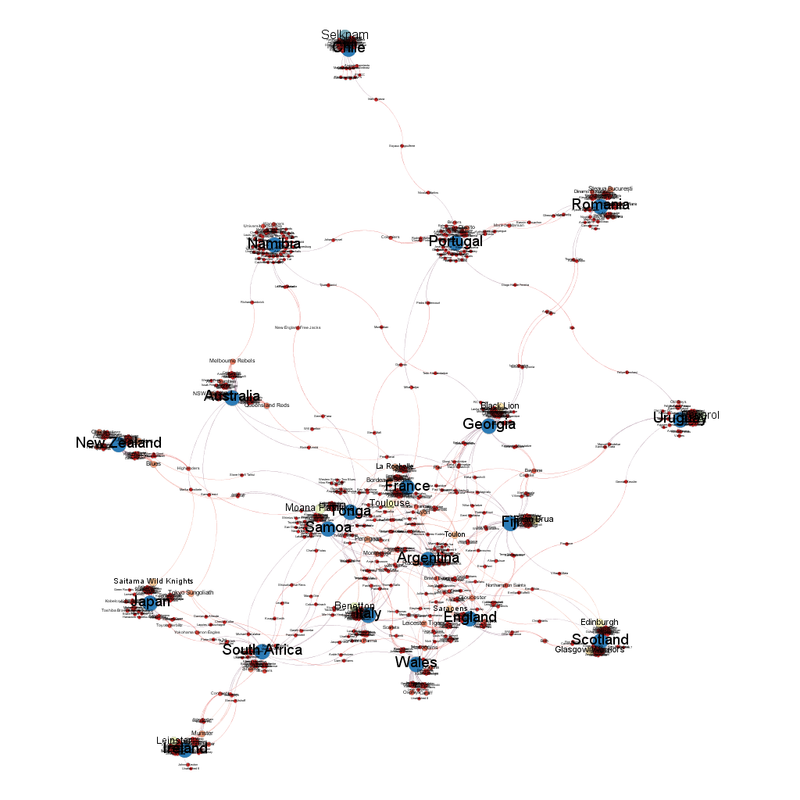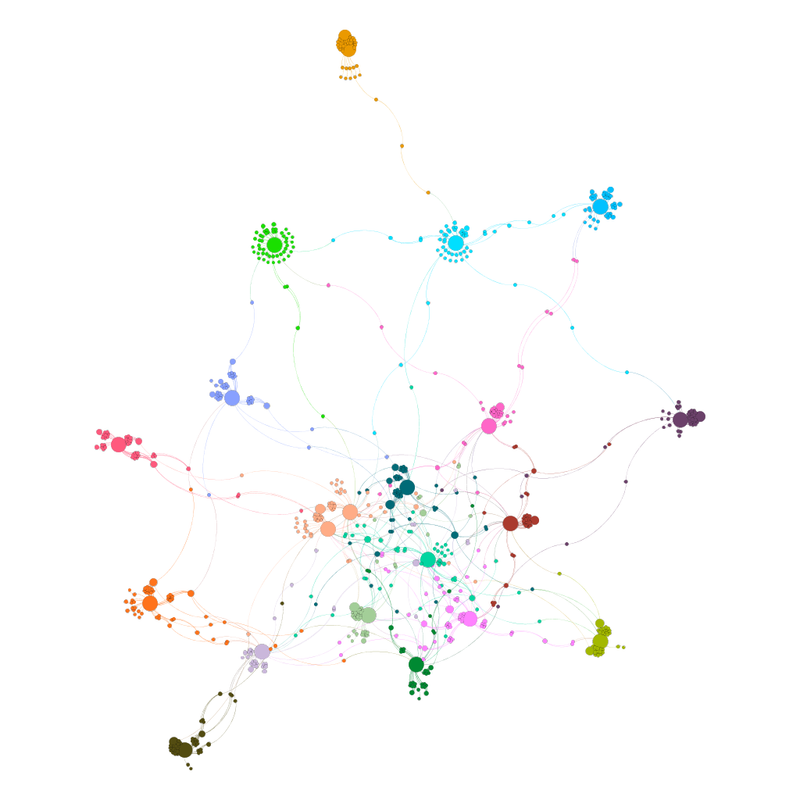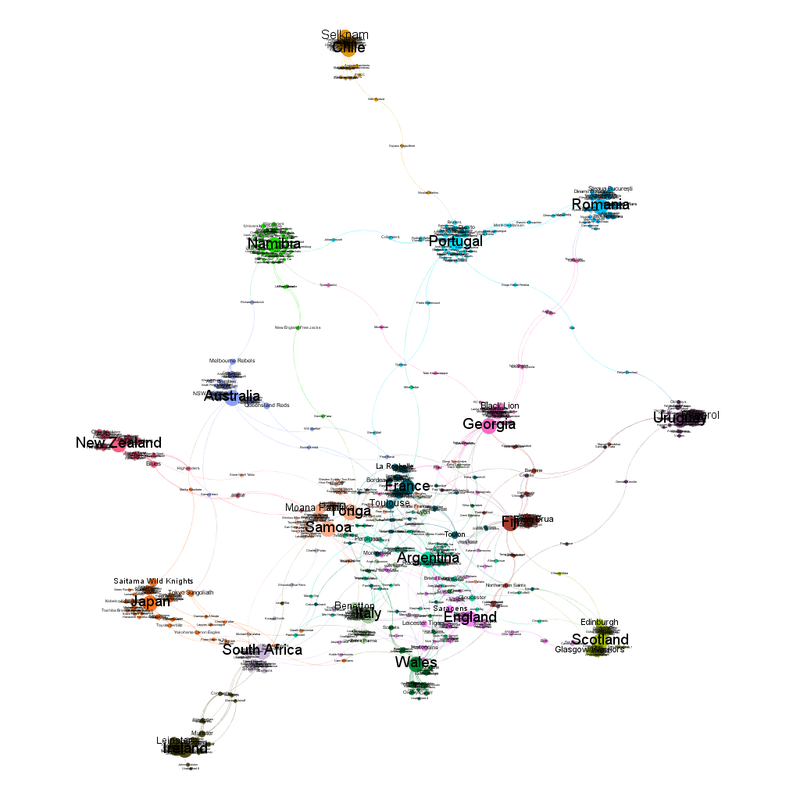These were correct as of the start of the tournament.
Due to the higher number of injuries in rugby than football, I'll do the updated versions after each round (and catch up with round 2 and 3 changes).
This is what the network diagram looked like at the start of the tournament:


The first thing that stands out to me is how much more spread the network diagram is than the equivalent for football.


This is probably due to several of the rugby unions having policies that say you can't play for the national team if you play abroad (or only once you have some ridiculous number of caps so it is almost the same as saying you can't).
On the other hand, it's more together than the equivalent diagram from 2019.
Every player in the New Zealand, France, Ireland and Japan squads plays in their home league, while none of the Tongans do.
Something else that might throw the diagram slightly is while the football and rugby league World Cups take place in the gaps between seasons (or do normally, 2022 was weird), rugby union takes place once the Northern hemisphere season has already started, so some of the elder statesmen are down as already having moved to their retirement homes teams or are unattached because once their national team are out, they're done.
That is partly why South Africa and Japan are so close together.
Most national teams have a couple of club teams where most of their players play (Chile are the most extreme with 27/33 players playing for Selknam, but New Zealand and Ireland's 33 players play for 4-5 club teams), with Namibia, Portugal and Argentina being the exceptions to this.
Selknam are the club team with the most representatives (27) followed by Penarol with 21 of the 33 Uruguayan team playing for them. Benetton and Moana Pasifika are tied for the third most representatives with 19 but there's are slightly more mixed although heavily Italian, Samoan and Tongan.
It's a sign of the changes in rugby union that none of the 10 Perpignan players in the World Cup play for France, and all 4 of the Newcastle Falcons players play for Argentina.
The creation of teams like Fijian Drua and Moana Pasifika have not only probably had a really good effect on the results of Fiji, Tonga and Samoa, but have changed the shape of the network diagram. Moana Pasifika, in particular, links Samoa and Tonga so tightly that in the community view they are one community.


That's why there's 20 national teams but only 19 communities.


Georgia are the national team closest to the centre, with Oyonnax the club team closest to the centre, which might reflect the French top two divisions being a melting pot producing many of the links between teams.
I think that is why there's the tight cluster of 7 teams (Samoa, Tonga, France, Argentina, Italy, England and Wales) in the centre of the bottom of the diagrams.
Because of teams like Ireland and New Zealand who only pick players from their own league, and those leagues having fewer foreign players in, the "strength" of being at the centre of the diagram as a predictive factor is less in rugby union, so I shan't be making predictions.
No comments:
Post a Comment